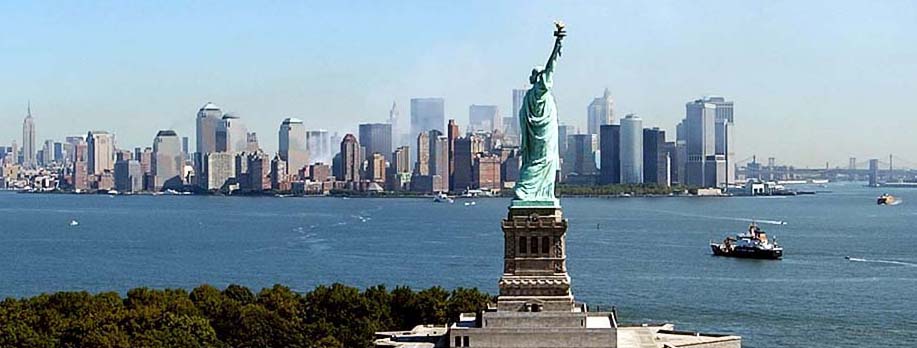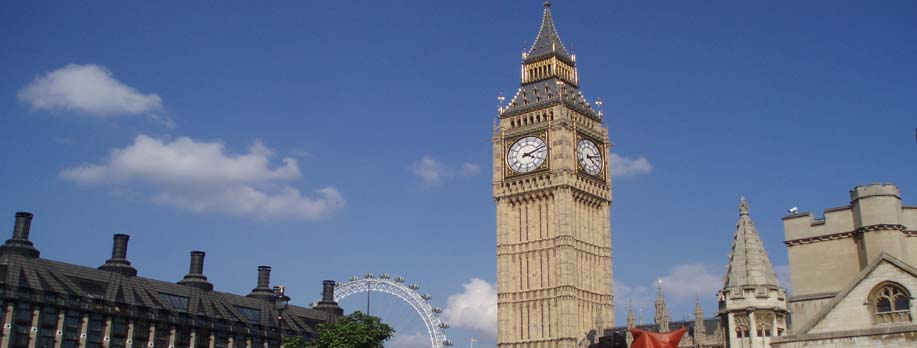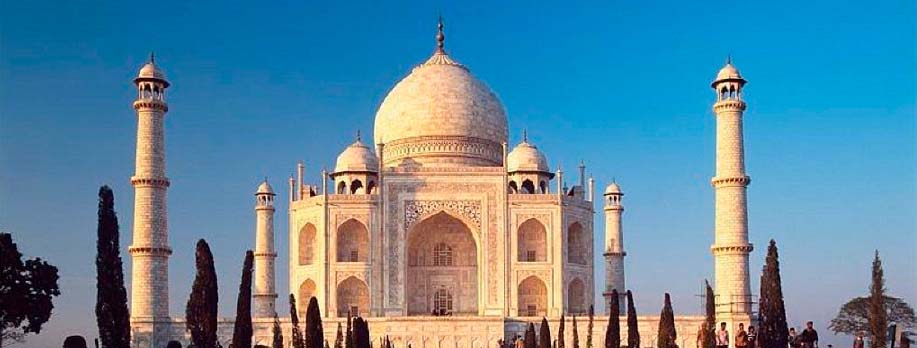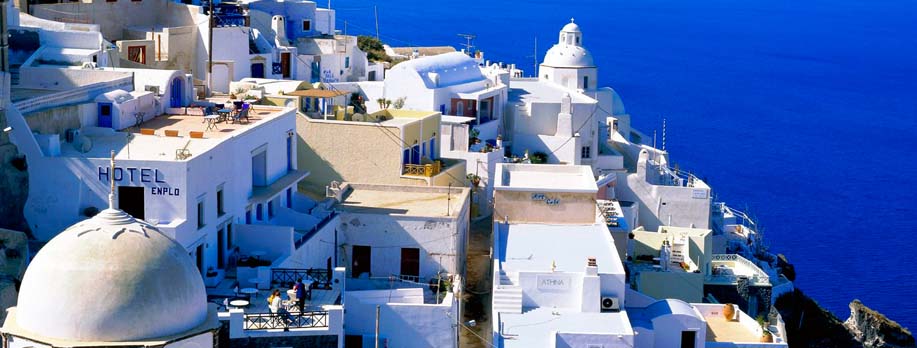| INDIA GATE - Delhi | |
|
India Gate is a memorial raised in honour of the Indian soldiers martyred during the Afghan war. The green, velvety lawns at India Gate, particularly, are a popular evening and holiday rendezvous for young and old alike. Ice-cream carts, balloon wallahs, popcorn and peanut vendors, carts selling cold water and cold drinks, panwallahs, men and women selling sweet-scented jasmine gajras (garlands) to decorate a bride, wife, daughter or girlfriend/’s hair, do brisk business at the fringe of the lawns. |
 |
| RASHTRAPATI BHAWAN - Delhi | |
|
Modern Delhi, or New Delhi as it is called, centres around the Rashtrapati Bhawan. It is architecturally a very impressive building standing at a height, flowing down as it were to India Gate. This stretch called the Rajpath is where the Republic Day parade is held. The imposing plan of this area conceived by Lutyens does not fade in its charm with the numerous summers or winters that go past. |
 |
| LAXMINARAYAN TEMPLE - Delhi | |
|
Also called the Birla temple, the Laxminarayan Temple was built by the Birla family in 1938. It is a temple with a large garden and fountains behind it. The temple attracts thousands of devotees on Janmashtami day, the birthday of Lord Krishna. The Father of the Nation, Mahatma Gandhi, was assassinated in this temple complex in 1948. |
 |
| HUMAYUN’S TOMB (DELHI) - Delhi |
| Humayun’s Tomb was built nine years after Humayun’s death by his wife Haji Begum. Designed by a Persian architect named Mirak Mirza Ghujas, and completed in 1565, the edifice was a trendsetter of the time. It is said that all later Mughal monuments, including the Taj Mahal, followed its design. |
| QUTAB MINAR - Delhi | |
|
The Qutab Minar is located at a small village called Mehrauli in South Delhi. It was built by Qutub-ud-din Aibek of the Slave Dynasty, who took possession of Delhi in 1206. It is a fluted red sandstone tower, which tapers up to a height of 72.5 m and is covered with intricate carvings and verses from the holy Quran. Qutub-ud-din Aibak began constructing this victory tower as a sign of Muslim domination of Delhi and as a minaret for the Muslim priest, the muezzin, to call the faithful to prayer. However, only the first storey was completed by Qutb-ud-din. The other storeys were built by his successor Iltutmish. The two circular storeys in white marble were built by Ferozshah Tughlaq in 1368, replacing the original fourth storey. |
 |
| RED FORT - Delhi | |
|
When one approaches old Delhi with a somewhat Westernized perception the emotional response can range from wonderment to bewilderment, from utter disgust to ecstasy. Undoubtedly, Old Delhi gives an insight into the multi-layered identity that so aptly characterizes India. The lanes are narrow, filled to bursting with people, throbbing with life. In the midst of this sea of people, suddenly you come face to face with the ramparts of the Red Fort. The decision for constructing the fort was taken in 1639, when Shahjahan decided to shift his capital to Delhi. Within eight years, Shahjahanabad was completed with the Red Fort—Qila-i-Mubarak (fortunate citadel)—Delhi’s seventh fort, ready in all its magnificence to receive the Emperor. Though much has changed now because of large-scale demolitions during the British occupation of the fort, its important structures have survived, the glory faded with age but still impressive. Passing under the grand Gothic arch and the octagonal open space of the market place—the Chatta Chowk, and the Naubat Khana—a double-storeyed structure where court musicians played five times a day, we see Diwan-i-Aam. Here is the fabulously crafted baldachino—the marble canopy decorated with the most exquisite pietra dura work. Diwan-i-Aam witnessed scenes of unexcelled splendour when it used to be decorated with golden curtains, gorgeous carpets, and gold and silver railings below dazzling chandeliers. Ministers, Rajas, and ambassadors stood in mute awe of the Emperor in court. |
 |
| CHANDNI CHOWK - Delhi | |
|
The living legacy of Delhi is Shahjahanabad. Created by the builder of Taj Mahal, this city, with the Red Fort as the focal point and Jama Masjid as the praying centre, has a fascinating market planned to shine under the light of the moon, called Chandni Chowk. Shahjahan planned Chandni Chowk so that his daughter could shop for all that she wanted. It was divided by canals filled with water, which glistened like silver in moonlight. The canals are now closed, but Chandni Chowk remains Asia/’s largest wholesale market. Crafts once patronized by the Mughals continue to flourish in the small lanes of the city. Tradition and modernity meet at unexpected places in Shahjahanabad. If you see a man pulling a rickshaw or feeding pigeons, you will see just as many talking over the cello or assembling a computer! An experience of timelessness awaits you at Shahjahanabad. |
 |
| RAJ GHAT (DELHI) - Delhi | |
|
On the bank of the legendary Yamuna, which flows past Delhi, there is Raj Ghat—the last resting place of Mahatma Gandhi, the father of the nation. It has become an essential point of call for all visiting dignitaries. Two museums dedicated to Gandhi are situated nearby. |
 |
| SHANTI VANA - Delhi |
| Lying close to the Raj Ghat, the Shanti Vana (literally, the forest of peace) is the place where India/’s first prime minister Jawaharlal Nehru was cremated. The area is now a beautiful park adorned by trees planted by visiting dignitaries and heads of state. |
| BAHAI TEMPLE (LOTUS TEMPLE) - Delhi | |
|
The Bahai Temple, situated in South Delhi, is shaped like a lotus. It is an eyecatching edifice worth exploring. Built by the Bahai community, it offers the visitor a serenity that pervades the temple and its artistic design. |
 |
| PURANA QUILA - Delhi | |
|
The Purana Quila is a good example of medieval military architecture. Built by Humayun, with later-day modifications by Sher Shah Suri, the Purana Quila is a monument of bold design, which is strong, straightforward and every inch a fortress. It is different from the well-planned, carefully decorated, and palatial forts of the later Mughal rulers. Purana Quila is also different from the later forts of the Mughals, as it does not have a complex of palaces, administrative and recreational buildings, as is generally found in the forts built later on. The main purpose of this now-dilapidated fort was its utility, with less emphasis on decoration. The Qala-I-Kunha Masjid and the Sher Mandal are two important monuments inside the fort. |
 |
| TUGHLAQABAD - Delhi | |
|
When Ghazi Malik founded the Tughlaq Dynasty in 1321, he built the strongest fort in Delhi at Tughlaqabad, completed with great speed within four years of his rule. It is said that Ghazi Malik, when only a slave to Mubarak Khilji, had suggested this rocky prominence as an ideal site for a fort. The Khilji Sultan laughed and suggested that the slave build a fort there when he became a Sultan. Ghazi Malik as Ghiyasuddin Tughlaq did just that—Tughlaqabad is Delhi/’s most colossal and awesome fort, even in its ruined state. Within its sky-touching walls, double-storied bastions, and gigantic towers were housed grand palaces, splendid mosques, and audience halls. |
 |
Delhi City Travel Guide |
Sight Seeing of Delhi |
Excursion in Delhi
Delhi Hotels










